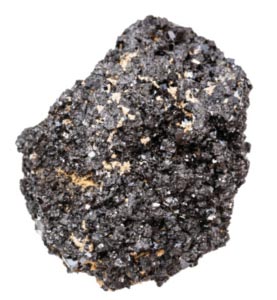By David Barnstone
The newest member of the Physical Review family published its first papers on April 7. A highly selective, fully open access journal, PRX Energy provides a forum to facilitate advances in basic and applied energy science.
“The physics community has long been central to energy science,” says APS Editor in Chief Michael Thoennessen. “But collaboration across traditional boundaries is now critical, as researchers and stakeholders from diverse disciplines, sectors, and regions focus their efforts on achieving a sustainable energy future.”
In their first editorial, Lead Editor David Scanlon and Managing Editor Jacilynn Otero write: “PRX Energy unites researchers from a range of disciplines that span chemistry, biology, materials, environmental studies, engineering and beyond…so scientists can work together globally to move even more effectively toward the discoveries that enable us to more efficiently harness, transform, and store energy and develop innovative technologies.”
The first three research articles are summarized below.
A Statistical Snapshot of Europe’s Sustainable Energy Market
Wind and solar power promise the possibility of zero-emission power generation. But unlike the burning of fossil fuels, the production of wind and solar power is variable: Some days are calm and windless, and the sun doesn’t shine at night. To meet this challenge, energy markets must be able to balance variable output against demand. They will also need to rely on short-term trading—that is, trading electricity by the half-day, hour, or even minute—and integrate supply from small producers.
To better understand fluctuations in price and demand, Chengyuan Han’s team analyzed data from the European Power Exchange, called EPEX SPOT, which sets prices for energy products, with varying targets and durations, across a vast Western European market. The researchers found that price fluctuations varied dramatically across hours and days, and according to weather patterns. They suggest that q-Gaussian distributions best fit their data of electricity prices.

Crystals of perovskite, a mineral used in solar panels—and the subject of two PRX Energy articles.
Testing for Capacitance in Perovskite Solar Cells
For decades, abundant silicon has been the go-to element used in the production of solar cells, the building blocks of solar panels, but a family of materials called perovskites are quickly catching up. Perovskites’ crystal structure makes them appealing for use in high-performance, low-cost solar cells, and perovskite solar cells (PSCs) are now nearly as efficient as their silicon counterparts. To further improve PSCs, researchers need to develop strategies for identifying processes that limit the power output of the cells.
Sandheep Ravishankar’s team found that existing methods of analyzing PSCs often mischaracterize the cells’ “capacitance”—their ability to capture and store energy in the form of electricity. This challenge arises from particular traits of the PSCs. The researchers developed a new model for improving the quality of capacitance measurements, which can detect defects that reduce the solar cell’s efficiency. Using simulations and analytical modeling, they developed guidelines to better assess capacitance, with applications to PSCs and solar cells in general.
A New View on the Optoelectronic Properties of Metal Halide Perovskites
Two-dimensional metal halide perovskites (MHPs) are excellent absorbers of light. But before 2D HDPs can be used in existing devices, like solar cells, researchers will need to be able to fine-tune the material’s optoelectronic properties, a task that requires accurate and precise measurement.
Kameron R. Hansen’s team investigated these properties by fabricating atom-thin layers of MHPs on an array of gold electrodes. After running experiments on the device, they developed a new method of measurement for band gap and exciton binding energy. The method reduces measurement errors by an order of magnitude, from about 40 meV (typical of today’s state-of-the-art approaches) to about 4meV. Such high precision, the authors noted, points to new opportunities to learn how chemical and environmental factors shape the properties of MHPs—and ultimately guide the design of new, highly efficient devices that harvest and/or emit light.
PRX Energy is waiving all article publication charges for manuscripts submitted on or before December 31, 2022. Keep up with the latest research by subscribing to monthly table-of-contents alerts at info.aps.org/journals-emails and following the journal on Twitter at twitter.com/PRX_Energy.
David Barnstone is APS Head of Public Relations.
©1995 - 2024, AMERICAN PHYSICAL SOCIETY
APS encourages the redistribution of the materials included in this newspaper provided that attribution to the source is noted and the materials are not truncated or changed.
May 2022 (Volume 31, number 5)
Articles in this Issue

